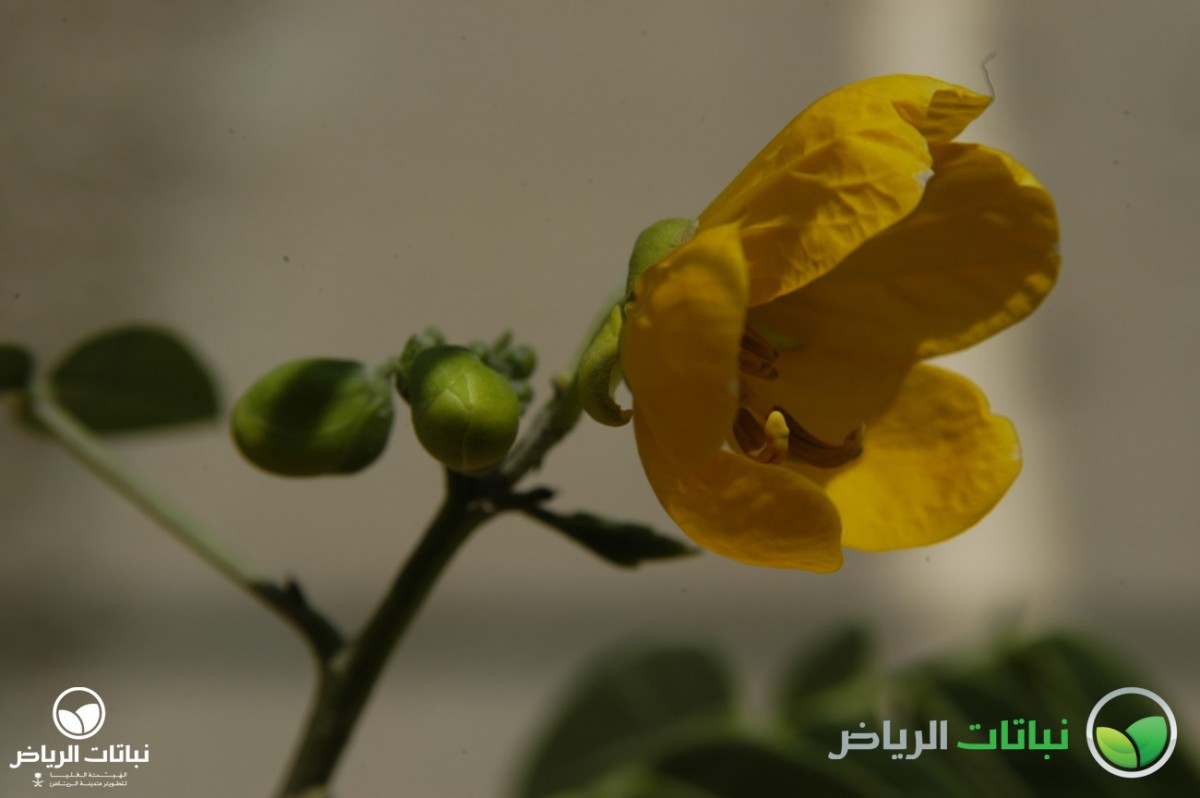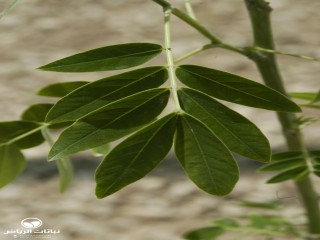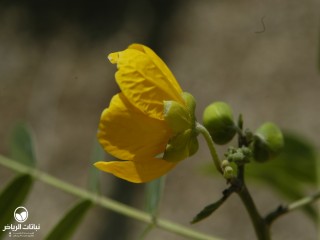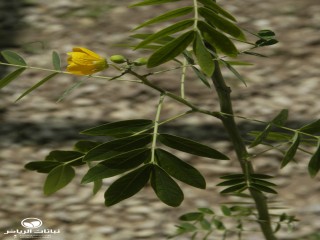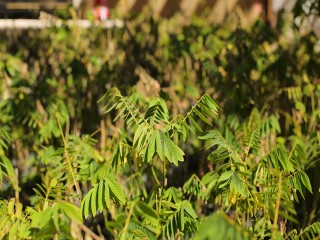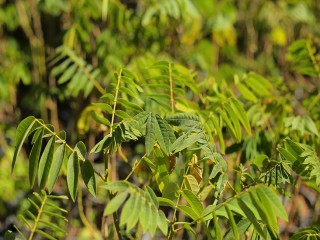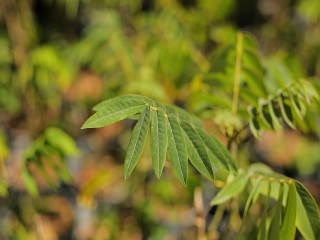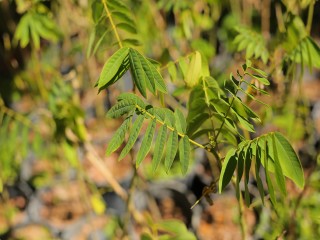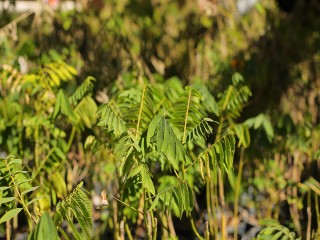Riyadh Plants
Coffee Senna, Septic Weed
This medium-sized shrub originates from tropical America. It grows slender twigs with compound, dull-green leaves to a total height of some 2 metres with an equivalent width. The alternate, evergreen foliage is compound with elliptical leaflets of 2 to 10 cm that may exhibit a reddish venation. From autumn until spring, yellow-orange flowers emerge in terminal racemes with up to six florets each. They resemble pea flowers measuring about 3 cm across, and attract bees and butterflies. Seeds ripen in cylindrical, glabrous pods of 12 cm in length. Their colour varies from olive-green and brown to almost black, and they can be used for propagation after being soaked for 24 hours. When roasted, they can serve as substitute for coffee beans, hence the common name Coffee Senna. Another common name, Septic Weed, indicates that it occasionally escapes from cultivation found on disturbed ground such as waste sites or ditches along roads. In Arriyadh, this can be excluded beyond irrigated areas, while in humid tropical countries they compete with crops. If bruised, this plant exudes a foetid smell. Plants are poisonous, but rarely ingested by livestock. Any soil with sufficient moisture is suitable, and the shrub benefits from fertile ground with high nutrient levels. It thrives in full sun to produce a stunning floral display. Under adverse conditions, Coffee Senna is short-lived and even grows annually in some regions. With respect to its proliferating habit, this shrub is useful in low-maintenance areas. It rarely suffers from disease.
